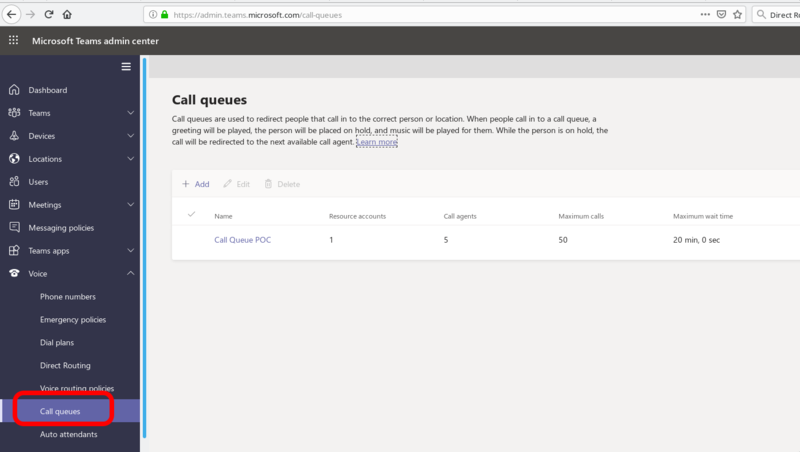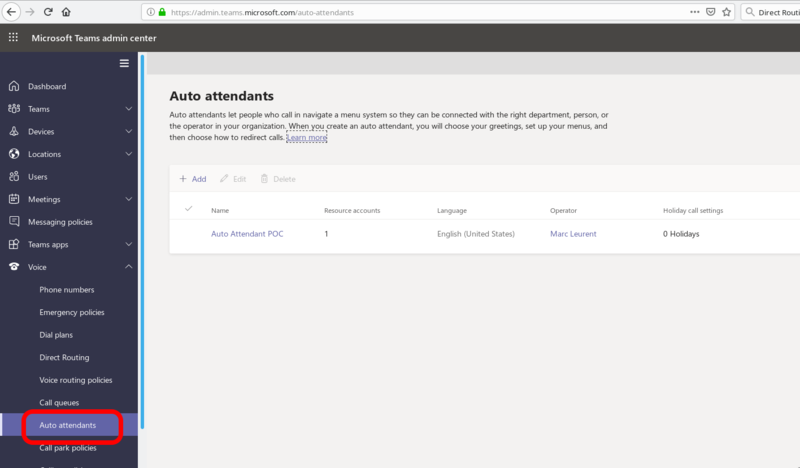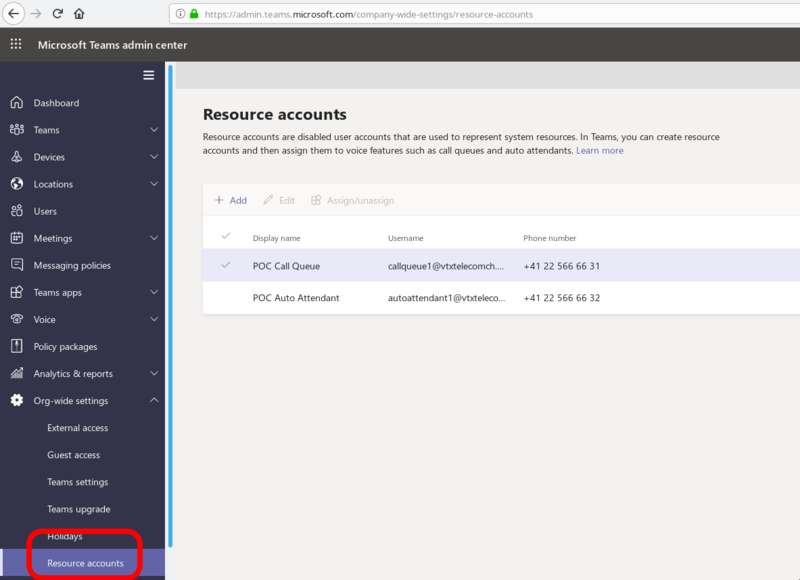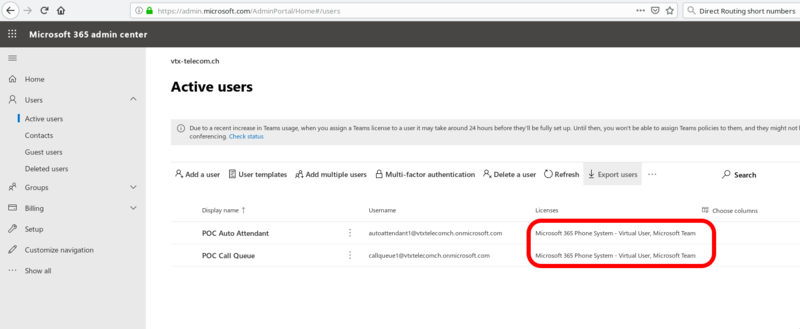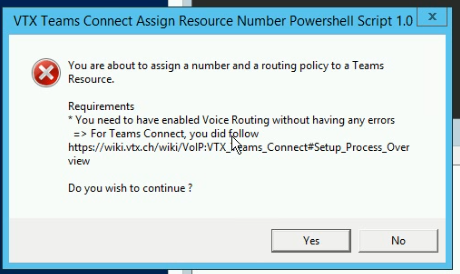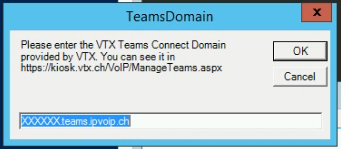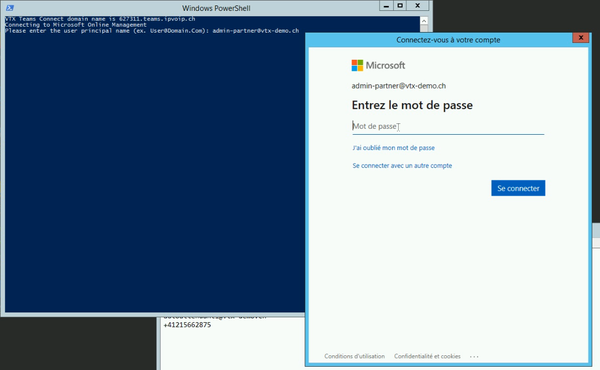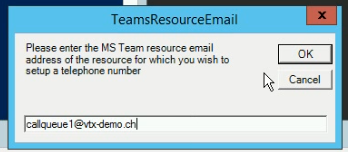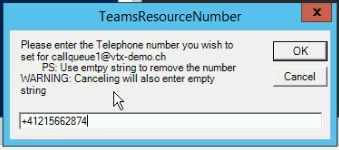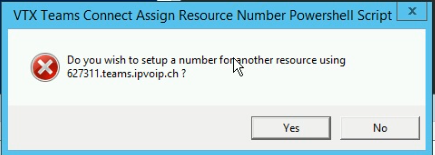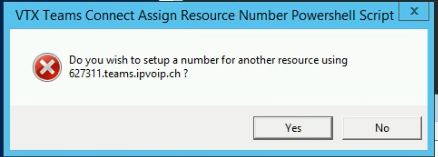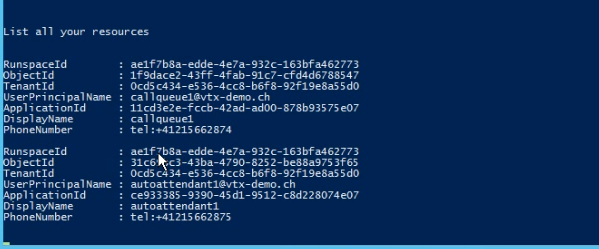VoIP:Teams:Resource Management
From VTX Public Wiki
Create and Manage Call Queues[edit | edit source]
- Problematic: You would like to create a Call Queue that will play some greetings and then ring on several phones in parallel / serial modes
- Solution : Follow procedure below
- Connect to https://admin.teams.microsoft.com/call-queues
- Follow documentation in https://docs.microsoft.com/en-us/microsoftteams/create-a-phone-system-call-queue
- Add a "Microsoft Teams" and "Microsoft 365 Phone System - Virtual User" license to your user
- Assign a number in the corresponding resource in next sections
Create and Manage Auto Attendants[edit | edit source]
- Problematic: You would like to create an auto Attendant that can answer your call, play accouncement, and route calls using Time Conditions (inclusing Holidays) or IVR system
- Solution : Follow procedure below
- Connect to https://admin.teams.microsoft.com/auto-attendants
- Follow documentation in https://docs.microsoft.com/en-us/microsoftteams/create-a-phone-system-auto-attendant
- Add a "Microsoft Teams" and "Microsoft 365 Phone System - Virtual User" license to your user
- Assign a number in the corresponding resource in next sections
Create Resource accounts[edit | edit source]
- Problematic: You would like to create a resource that will be linked to a Call Queue or Auto Attendent and assign it with a Phone Number
- Solution : Follow procedure below
- Connect to https://admin.teams.microsoft.com/company-wide-settings/resource-accounts
- Follow documentation in https://docs.microsoft.com/en-us/microsoftteams/manage-resource-accounts#create-a-resource-account-in-the-microsoft-teams-admin-center
Number Mapping : Assign numbers to Resource accounts[edit | edit source]
Assign Resource numbers using a VTX Powershell Script VTX_Connect_Teams_Assign_Resource_Numbers.ps1[edit | edit source]
| By default for security reason, it is not allowed to execute a powershell script downloaded on the internet, that is why you will need to open them with Wordpad to check what it does, save it and execute it afterwards |
- Download https://wiki.vtx.ch/media/VTX_Connect_Teams_Assign_Resource_Numbers.ps1 on your computer ( Right Click on the link / Download )
- Open it with Wordpad and use Ctrl-s to save it again ( to inform the system that it is local script )
- Execute it on your PC : It will ask you for these parameters and create the routing
- VTX Teams Domain : ex: 123456.teams.ipvoip.ch
- Your MS Admin Credentials for : ex: admin@MSDOMAIN.onmicrosoft.com
- The MS Team resource email : ex: callqueueX@MSDOMAIN.onmicrosoft.com or autoattendantX@MSDOMAIN.onmicrosoft.com
- The Telephone number you wish to set : ex: +41225661234
Here is a list of screenshots to see how the script works
Or Assign Resource numbers manually in Powershell Command Prompt[edit | edit source]
- Open a powershell prompt on your PC
- Copy paste command below one by one changing the values in bold with your own
# Set Variables $TeamsDomain = "123456.teams.ipvoip.ch" $TeamsResourceEmail = "resourceX@MSDOMAIN.onmicrosoft.com" $TeamsResourceNumber = "+41215661234" # Connect to Microsoft Teams management and assign number and profile to the user $Session = New-CsOnlineSession Import-PSSession $Session -AllowClobber # Assign a number to your resource Set-CsOnlineApplicationInstance -Identity $TeamsResourceEmail -OnpremPhoneNumber $TeamsResourceNumber # Assign a Voice Routing Policy to your resource to allow it to call out towards external numbers Get-CsOnlineUser -Identity $TeamsResourceEmail | Grant-CsOnlineVoiceRoutingPolicy -PolicyName "CsOnlineVoiceRoutingPolicy-$TeamsDomain" # Wait 60s for settings to be applied Sleep -s 60 # Verify Your setup Get-CsOnlineApplicationInstance -Identity $TeamsResourceEmail Get-CsOnlineUser -Identity $TeamsResourceEmail | Select sipaddress,EnterpriseVoiceEnabled,OnPremLineURI,OnlineVoiceRoutingPolicy | Format-List # Logout Get-PSSession | Remove-PSSession

